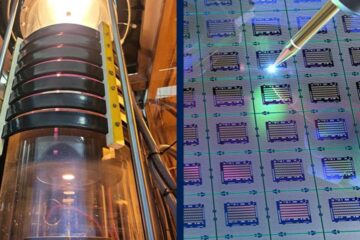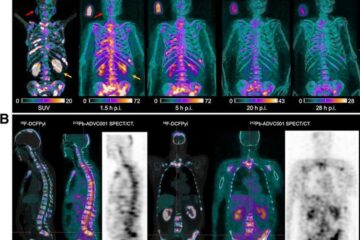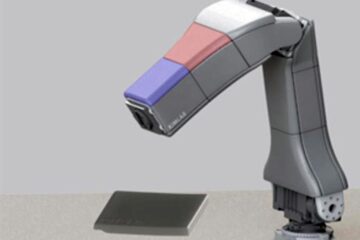Quantum Computing Has Applications in Magnetic Imaging, Say Pitt Researchers

Quantum computing—considered the powerhouse of computational tasks—may have applications in areas outside of pure electronics, according to a University of Pittsburgh researcher and his collaborators.
Working at the interface of quantum measurement and nanotechnology, Gurudev Dutt, assistant professor in Pitt’s Department of Physics and Astronomy in the Kenneth P. Dietrich School of Arts and Sciences, and his colleagues report their findings in a paper published online Dec. 18 in Nature Nanotechnology. The paper documents important progress towards realizing a nanoscale magnetic imager comprising single electrons encased in a diamond crystal.
“Think of this like a typical medical procedure—a Magnetic Resonance Imaging (MRI)—but on single molecules or groups of molecules inside cells instead of the entire body. Traditional MRI techniques don’t work well with such small volumes, so an instrument must be built to accommodate such high-precision work,” says Dutt.
However, a significant challenge arose for researchers working on the problem of building such an instrument: How does one measure a magnetic field accurately using the resonance of the single electrons within the diamond crystal? Resonance is defined as an object’s tendency to oscillate with higher energy at a particular frequency, and occurs naturally all around us: for example, with musical instruments, children on swings, and pendulum clocks. Dutt says that resonances are particularly powerful because they allow physicists to make sensitive measurements of quantities like force, mass, and electric and magnetic fields. “But they also restrict the maximum field that one can measure accurately.”
In magnetic imaging, this means that physicists can only detect a narrow range of fields from molecules near the sensor’s resonant frequency, making the imaging process more difficult.
“It can be done,” says Dutt, “but it requires very sophisticated image processing and other techniques to understand what one is imaging. Essentially, one must use software to fix the limitations of hardware, and the scans take longer and are harder to interpret.”
Dutt—working with postdoctoral researcher Ummal Momeen and PhD student Naufer Nusran (A&S’08 G), both in Pitt’s Department of Physics and Astronomy—has used quantum computing methods to circumvent the hardware limitation to view the entire magnetic field. By extending the field, the Pitt researchers have improved the ratio between maximum detectable field strength and field precision by a factor of 10 compared to the standard technique used previously. This puts them one step closer toward a future nanoscale MRI instrument that could study properties of molecules, materials, and cells in a noninvasive way, displaying where atoms are located without destroying them; current methods employed for this kind of study inevitably destroy the samples.
“This would have an immediate impact on our understanding of these molecules, materials, or living cells and potentially allow us to create better technologies,” says Dutt.
These are only the initial results, says Dutt, and he expects further improvements to be made with additional research: “Our work shows that quantum computing methods reach beyond pure electronic technologies and can solve problems that, earlier, seemed to be fundamental roadblocks to making progress with high-precision measurements.”
Media Contact
More Information:
http://www.pitt.eduAll latest news from the category: Physics and Astronomy
This area deals with the fundamental laws and building blocks of nature and how they interact, the properties and the behavior of matter, and research into space and time and their structures.
innovations-report provides in-depth reports and articles on subjects such as astrophysics, laser technologies, nuclear, quantum, particle and solid-state physics, nanotechnologies, planetary research and findings (Mars, Venus) and developments related to the Hubble Telescope.
Newest articles

Silicon Carbide Innovation Alliance to drive industrial-scale semiconductor work
Known for its ability to withstand extreme environments and high voltages, silicon carbide (SiC) is a semiconducting material made up of silicon and carbon atoms arranged into crystals that is…

New SPECT/CT technique shows impressive biomarker identification
…offers increased access for prostate cancer patients. A novel SPECT/CT acquisition method can accurately detect radiopharmaceutical biodistribution in a convenient manner for prostate cancer patients, opening the door for more…

How 3D printers can give robots a soft touch
Soft skin coverings and touch sensors have emerged as a promising feature for robots that are both safer and more intuitive for human interaction, but they are expensive and difficult…





















